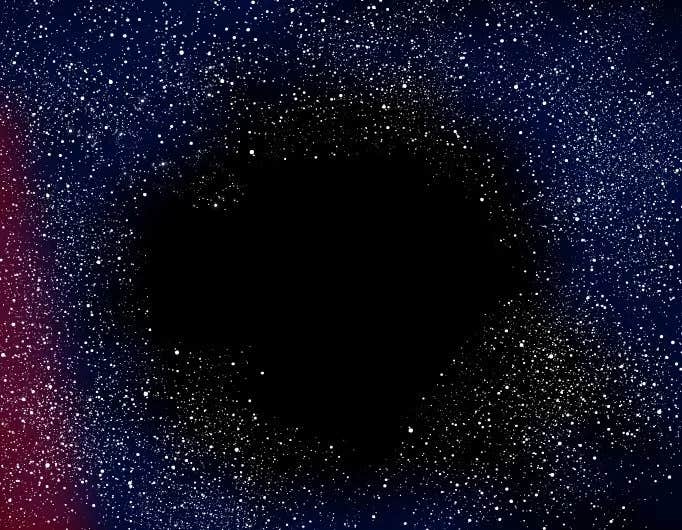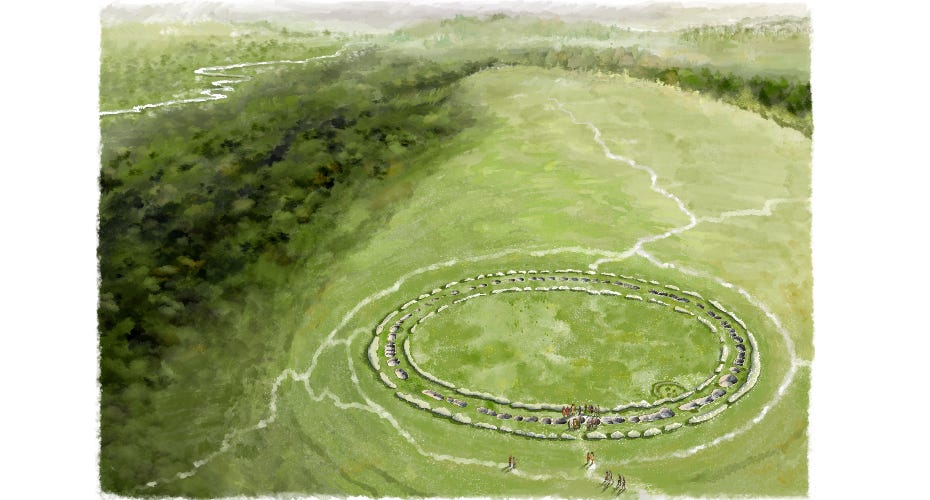The Milky Way may reside at the center of a 2 billion light-year wide cosmic void
The universe’s rapid expansion challenges current models. Scientists explore the KBC void and alternative theories to solve the mystery.

The KBC void may explain the Hubble tension, a cosmic puzzle showing faster-than-expected local expansion. (CREDIT: CC BY-SA 4.0)
Cosmologists are unraveling a perplexing mystery: the universe appears to be expanding faster than predicted. Known as the Hubble tension, this discrepancy challenges the cornerstone of modern cosmology, the Lambda Cold Dark Matter (ΛCDM) model.
Measurements of the Hubble constant, H0H_0H0, vary depending on where and how they're taken. Local observations using nearby supernovae and Cepheid variables yield values roughly 10% higher than predictions based on the cosmic microwave background (CMB).
These divergent results could imply either a fundamental flaw in ΛCDM or a previously unrecognized cosmic feature influencing our measurements.
The Nature of the Hubble Tension
The Hubble tension is more than a minor inconsistency. If local measurements are accurate, the universe could be about 10% younger than previously calculated. Yet, this contradicts the established ages of the oldest stars.
Nobel laureate Adam Riess, a leading figure in the debate, remarked, “Our measurements keep getting more precise, and the tension doesn’t go away.”
The persistence of this conflict has prompted researchers to seek explanations beyond the standard model, and one of the most intriguing hypotheses involves a vast underdensity in the cosmic structure known as the KBC void.
The KBC Void: A Gigantic Cosmic Underdensity
Proposed in 2013, the KBC void is an enormous region of space spanning two billion light-years, making it the largest void ever observed.
Related Stories
Named after astronomers Keenan, Barger, and Cowie, who first identified it, this underdensity exhibits a matter density about 20% lower than surrounding regions.
If the void exists, it could mean that the Milky Way and its neighbors reside in a uniquely sparse region of the universe. This would challenge the cosmological principle, which holds that the universe should appear homogeneous and isotropic on large scales.
Evidence supporting the KBC void comes from various observations across multiple wavelengths, including optical, infrared, X-ray, and radio. Recent studies, such as those by Indranil Banik of the University of St. Andrews, suggest that the void might be the key to resolving the Hubble tension.
“By now, it's pretty clear that we are in a significant underdensity,” Banik said. His work, published in the Monthly Notices of the Royal Astronomical Society, proposes that our local measurements of H0H_0H0 are inflated due to the void’s influence.
How the Void Could Explain Faster Expansion
Galaxies within the KBC void experience a gravitational pull toward denser regions beyond its borders. This outflow causes a local acceleration in the expansion rate, resulting in a higher observed H0H_0H0. Banik’s calculations estimate that the void could account for an 11% increase in the locally measured Hubble constant, bringing it in line with observations.
However, this explanation poses challenges for the ΛCDM model. Simulations suggest that a void as large and underdense as the KBC void is improbable within ΛCDM without invoking highly unlikely early density fluctuations. To form such a structure naturally, the model would require a 10σ deviation from the expected density, an extremely rare occurrence.
Bulk Flows: Testing the Void Hypothesis
To further test the void hypothesis, scientists have turned to bulk flows—large-scale movements of galaxies. These flows provide insight into the distribution of matter and the gravitational landscape of the universe.
Using data from the CosmicFlows-4 galaxy catalog, recent studies by Watkins et al. (2023) have revealed bulk flows exceeding 400 km/s on scales of 300 million light-years. Such high velocities are in stark tension with ΛCDM, which predicts much slower flows on these scales.
Banik’s νHDM model, an alternative to ΛCDM, accurately predicts these bulk flows. Unlike ΛCDM, νHDM incorporates Milgromian dynamics (MOND), which modifies gravitational laws at low accelerations. This model includes an additional type of sterile neutrino that aids in matching observed galactic phenomena and large-scale structures.
“The νHDM framework provides a consistent explanation for both the KBC void and the observed bulk flows,” Banik explains.
Implications for Cosmology
If the KBC void and νHDM model hold, they could revolutionize cosmology. Brian Keating, a cosmologist at UC San Diego, supports exploring this direction.
“The hypothesis that a local void could explain the Hubble tension by inducing significant outflows seems sound in principle,” he says. However, Keating cautions that such a solution might only address local discrepancies. “If the local void isn’t representative of the wider cosmos, this may only provide a local solution, not a global one.”
Another intriguing aspect of the KBC void involves peculiar velocities—deviations from the expected motion due to the universe’s overall expansion. The Milky Way’s peculiar velocity is relatively low, around 627 km/s, a fact that νHDM can naturally account for through gravitational interactions between nearby and distant structures.
While the void hypothesis offers a compelling narrative, it is not the only contender. Some researchers propose that early dark energy—an additional energy component in the universe’s infancy—might explain the higher local H0H_0H0 values.
This theory suggests that an early burst of accelerated expansion could alter the universe’s expansion history, reconciling the CMB and local measurements. However, this model introduces its own challenges, such as potential conflicts with the observed ages of ancient stars.
Banik remains focused on testing his void model further. His next research aims to analyze supernova data beyond the void’s boundaries. If the Hubble constant aligns with standard predictions outside the void, it would provide strong evidence for the local void hypothesis.
Broader Implications
The resolution of the Hubble tension has implications for our understanding of the universe’s age, composition, and fundamental laws.
If voids like KBC are rare but significant contributors to local discrepancies, they could redefine how cosmologists interpret observational data. Conversely, if new physics such as νHDM or early dark energy is required, it would signal a paradigm shift in cosmology.
Regardless of the outcome, the Hubble tension underscores the dynamic and evolving nature of scientific inquiry. As Banik puts it, “Each new observation brings us closer to unraveling the complexities of our universe.”
The KBC void and the Hubble tension highlight the interconnectedness of local and global cosmic phenomena. Whether these puzzles find resolution within existing models or demand entirely new frameworks, they serve as a testament to the ingenuity and persistence of the scientific community.
Note: Materials provided above by The Brighter Side of News. Content may be edited for style and length.
Like these kind of feel good stories? Get The Brighter Side of News' newsletter.
Joseph Shavit
Head Science News Writer | Communicating Innovation & Discovery
Based in Los Angeles, Joseph Shavit is an accomplished science journalist, head science news writer and co-founder at The Brighter Side of News, where he translates cutting-edge discoveries into compelling stories for a broad audience. With a strong background spanning science, business, product management, media leadership, and entrepreneurship, Joseph brings a unique perspective to science communication. His expertise allows him to uncover the intersection of technological advancements and market potential, shedding light on how groundbreaking research evolves into transformative products and industries.



